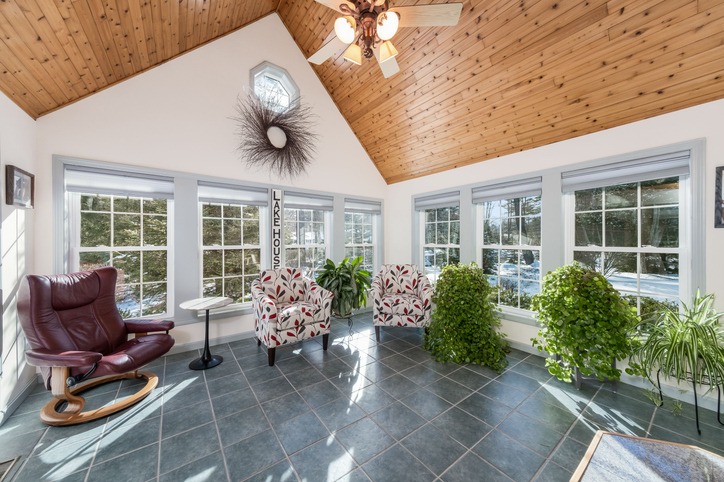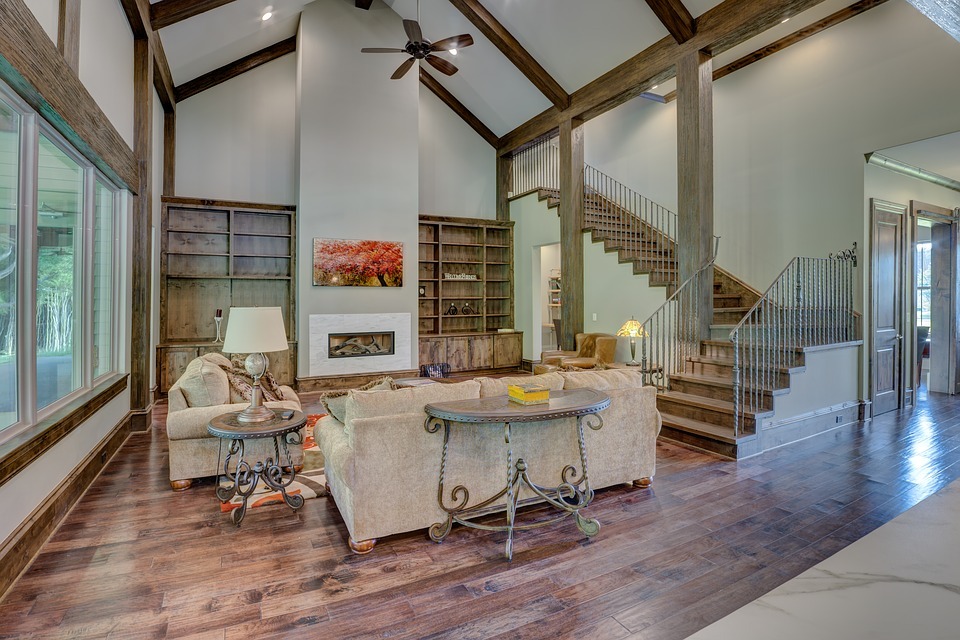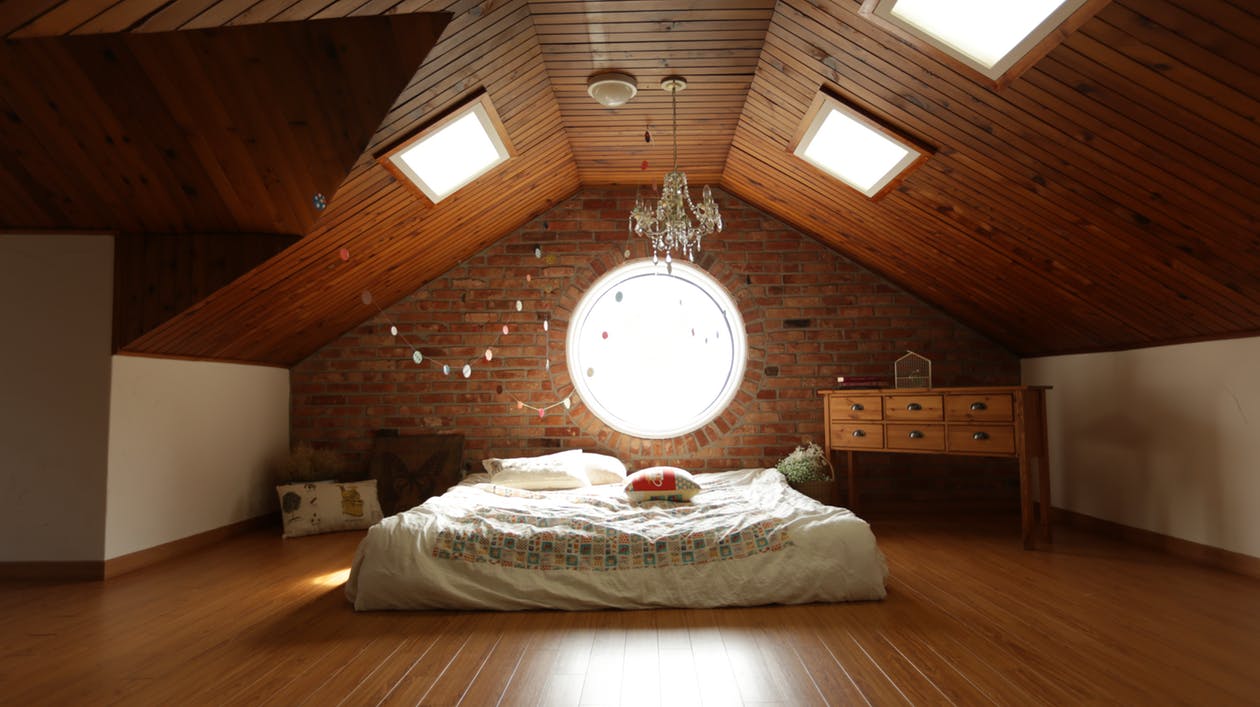A cathedral ceiling or also known as a vaulted ceiling is a great ceiling choice if you own a home or space that has low, flat ceilings that feel cramped, dull, or old-fashioned. It’s because cathedral ceilings can add a room, air space, value, and overall beauty to a house. They also come in different types of designs but are usually defined as any slanted ceiling that follows the shape of the roof’s pitch. With this, they can make the top of any room appear taller, creating the feel of an airy church sanctuary.
Cathedral ceilings mimic that of Roman cathedrals and when you integrate this dramatic feel into your home, it can enhance both your space and your psyche. This type of ceiling often gives homes a rustic feel and an antique look.
However, there are some home designs which do not benefit from a cathedral ceiling. If you’re thinking about installing this type of ceiling in your home, we are going to give you some of its advantages and disadvantages to help you decide if it’s the best decision.
Advantages of Cathedral Ceilings
Here are some of the benefits you can get if you decide to install a cathedral ceiling into your home.
- Can Give an Illusion of a Larger Space: The main advantage of having a cathedral ceiling is it can increase spaciousness in a certain room. Cathedral ceilings do not create floor space but it gives an illusion that makes a room appear bigger and can make it feel less closed in.
- Can Increase Light in the Room: Cathedral or vaulted ceilings can also provide more natural light into your home more than giving it an airy feeling. Cathedral ceilings do allow good skylight placement and they do a great job of displaying wood beams inside. This is also great for homes that face south because it will be warm in winter and cool in summer.
- Can Make a Room Look More Interesting: Having a cathedral ceiling adds tonal warmth and unusual detail to certain rooms, making it look far more exotic compared to plain white ceilings.
- Can Add a Sense of Grandeur: A cathedral ceiling can add elegance and grandeur to any room. It draws the eye up and can be complemented by exposed beams to add a wonderful finishing touch. It is also a great type of ceiling if you live in an area where the views are dramatic because it can increase the window space and enhance the scenery outside.
Disadvantages of Cathedral Ceilings
Cathedral ceilings certainly have a lot of advantages especially when it comes to dealing with small spaces. However, having this type of ceiling also comes with a few disadvantages and here are some of them.
- Less Energy Efficient: Cathedral ceilings are notorious energy-wasters especially during the winter season. It’s because the money you will be spending on heating will end up at the peak of the ceiling instead of going down where it can keep you warm. It also goes the same during summer because you will have to be cooling a lot more air in your room with the extra space.
- Higher Construction Cost: Building a room with a cathedral ceiling can add a considerable expense to the construction project because it requires more framing. You will also need to work closely with an architect to make sure that the room has enough structural support and space to accommodate higher ceilings.
- Difficult to Clean: Cathedral ceilings can be a nightmare when it comes to cleaning especially when cobwebs begin to develop on their corners. You will have to make an extra effort of climbing a ladder to be able to clean them well. And if you wish to repaint the ceiling, you will probably need a scaffolding. So, before installing a cathedral ceiling, ask yourself first if you’re up to this challenge.
Design Considerations for Cathedral Ceilings
Insulation and Energy Efficiency
One of the challenges of cathedral ceilings is maintaining energy efficiency, as the increased volume of space can lead to higher heating and cooling costs. Proper insulation is crucial, both in the ceiling itself and along the roofline, to minimize heat loss and gain. Ventilation should also be considered to prevent moisture buildup.
Structural Support
The design of a cathedral ceiling requires careful planning to ensure structural integrity. Additional support may be necessary to bear the weight of the ceiling and roof, especially in older homes or in cases where the ceiling is being retrofitted.
Aesthetic Balance
While the height and slope of a cathedral ceiling can create a stunning visual effect, it’s important to maintain balance in the room’s decor. Furniture and decor should be scaled appropriately, with larger pieces or tall artwork helping to anchor the space.
Lighting
Strategic lighting is key to showcasing a cathedral ceiling’s beauty. A combination of ambient, task, and accent lighting can highlight the ceiling’s architectural features while ensuring the space is well-lit. Pendant lights and chandeliers can make striking statements when suspended from the peak, drawing attention to the ceiling’s height.
Making the Most of Your Cathedral Ceiling
To fully capitalize on the benefits of a cathedral ceiling, consider the following tips:
- Color Choices: Lighter colors can enhance the ceiling’s expansive effect, while darker hues create a cozier atmosphere. Consider painting the ceiling a lighter shade than the walls to amplify the sense of height.
- Wooden Beams: Exposed beams can add character and warmth to a cathedral ceiling, emphasizing its architectural details and providing a rustic or traditional touch.
- Window Treatments: High windows or skylights can be dressed with motorized shades or left bare to maximize natural light and views.
- Furnishing: Select furniture that complements the grand scale of the ceiling, using taller items to bridge the space between the floor and the peak.
Final Thoughts
Cathedral ceilings offer a unique opportunity to create visually stunning, airy, and light-filled spaces in a home. While they require careful planning and consideration, especially in terms of insulation, structural support, and lighting, the result can be a breathtaking interior that feels both grand and inviting. By embracing the architectural beauty and spatial benefits of cathedral ceilings, homeowners can create distinctive and dynamic living environments that stand the test of time. It is best for those who are looking for ways on how to make a small room appear bigger and feel more spacious. We hope the advantages and disadvantages of cathedral ceilings we shared will help you decide if it is the best type of ceiling for your home.



